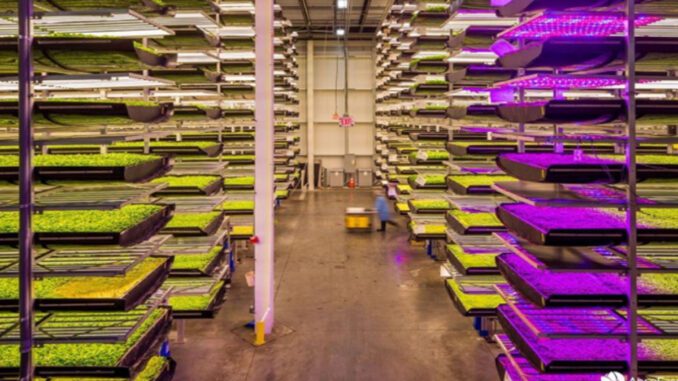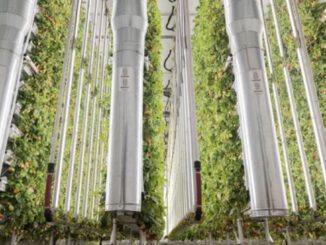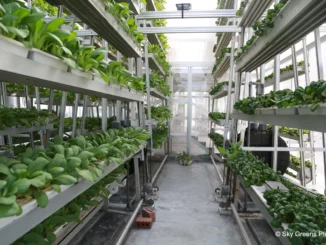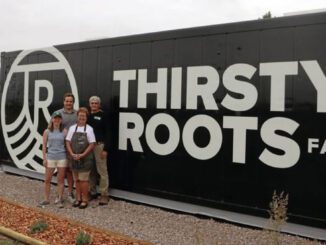
Take an Inside Look at Where Is the Indoor Vegetable Industry Heading
Indoor Vegetable Industry Trends | Rick Snyder |
The growth of the greenhouse vegetables industry in the U.S. has really been something to watch over the last few decades. For many years, most of the production was from hundreds, and then thousands, of small, family-run farms. But starting in the last few decades, enormous greenhouse ranges have been erected in various parts of the country, with each of their corporate owners choosing the location based on trying to optimize many factors. These include environment (e.g., light intensity, temperature, snow load, the percentage of sunny days), water abundance and quality, labor market, proximity to shipping points, etc.
Some of these have succeeded while some have failed. Farming of any kind is a risky business. Sometimes greenhouses are destroyed by massive storms, sometimes by unexpected and undiagnosed diseases, until it’s too late to save the crop. Sometimes the demise is from poor management.
First, a Look Back
Between 2009 and 2014, the biggest growth area in greenhouse vegetables was in peppers (186%), followed by cucumbers (83%), lettuce (57%), and lastly tomatoes (only 7%). But in the next five-year period, cucumbers had the largest loss of acreage with a 42% decline. Peppers dropped 30%. But tomatoes increased 23% and lettuce 28%, according to USDA Economic Research Service.
During this same period, imports of greenhouse-grown produce also increased sharply. The demand for high-quality vegetables from green-houses continues to be strong.
What is this worth? Total U.S. retail sales of greenhouse-grown vegetables and herbs was about $1.5 billion in 2018, according to Statista’s website (Statista.com).
Vertical Farming
One of the newer trends in indoor production is vertical farming. This is simply stacking growth containers one on top of another. They can be as high as is practicable for managing growth and harvesting the crop. These are often accompanied by LED lights, since the vertical structure would not allow sunlight to penetrate all levels.
Sometimes this type of production is in large warehouses with no resemblance to traditional greenhouses of any kind. Automation takes priority over a large, well-trained labor crew. The systems are referred to as “plant farms” or “plant factories,” which connotes a sterile, unnatural environment for the growth of biological systems like vegetables.
However, it’s very possible these plant factories are indeed the future, much as electric cars and trucks are, without a doubt, the future of the auto industry. Even in the face of resistance from the ICE (internal combustion engine) enthusiasts, electric transportation will gradually take over. It’s only a matter of time.
Exhibit A: Virginia
Although there are new mega-greenhouses popping up all over the country, Virginia is an excellent example of the future for any other state that wants to be prepared for the future.
- In 2019, Aerofarms announced it was building a $42 million facility in Danville, the largest in the state. Their capacity is 3 million pounds of leafy greens per year. They claim that their system makes greens 390 times more productive. Really.
- Soli Organic (formerly known as Shenandoah Growers) in Rockingham is growing herbs and leafy greens.
- Beanstalk is growing heirloom varieties of diverse types of salad greens, herbs, and microgreens in Herndon.
- Fresh Impact Farms in Arlington grows herbs, greens, microgreens, and edible flowers, marketing to the metro area around Washington, DC.
- Sunny Farms in Virginia Beach is building a 1.2 million square foot greenhouse to grow lettuce, greens, and other vegetables.
- Meanwhile in Richmond, Babylon Micro-Farms is planning to launch vertical farms all over the country. They design small-scale, indoor growing systems and market them to hospitals, schools, and other institutions.
Controlled Environment Agriculture (CEA) is the future of food growth. By eliminating one of the most potent risks — weather — these systems permit much better control over the crop. Plant managers then have to control irrigation, fertility, temperature, pest management, and all other factors of agricultural enterprise. They will, of course, still require excellent management.
The best candidates for CEA are lettuce, herbs, microgreens, tomatoes, cucumbers, peppers, strawberries, and of course, marijuana. The latter may have to wait for some federal laws to change.
Field vegetable growers — don’t worry. Field production will never go away. It just needs to stay competitive.
Original Article: https://www.growingproduce.com/production/protected-agriculture/take-an-inside-look-at-where-is-the-indoor-vegetable-industry-heading/



